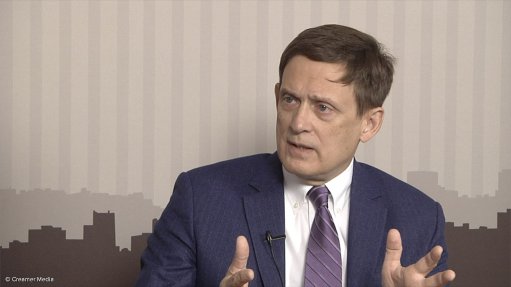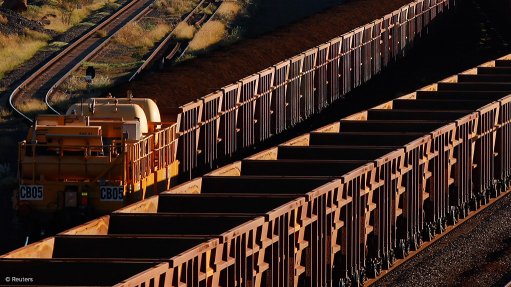South Africa’s gold sector must improve its position



ALISTAIR HEWITT A combination of macroeconomics and fundamentals will continue to support a healthy gold market in 2017
ASIAN DEMAND China will maintain a strong level of bullion demand in 2017 and the precious metal will remain an important asset for investors in India as well
Stakeholders in South Africa’s gold mining industry need to collaborate so that the country can regain its standing as a major gold producer and realise the significant value that the sector can potentially contribute to the local economy, says gold industry market development organisation World Gold Council market intelligence head Alistair Hewitt.
He avers that government, mining companies, mineworkers and local communities need to join forces to improve the country’s global positioning in terms of gold production, especially as the global market strengthens.
A large number of investors worldwide have rekindled their interest in gold, following the precious metal’s performance in 2016, says Hewitt. The gold price rose by 8% to $1 248/oz last year, making it one of the best-performing assets in 2016, heightening awareness of substantial macroeconomic and geopolitical risks – including Brexit, negative interest rate policies, the election of US President Donald Trump and forth-coming elections in Europe – which have boosted investment in the commodity.
Global demand for the precious metal rose 2% in 2016 to 4 309 t, primarily driven, Hewitt points out, by annual inflows into gold-backed exchange-traded funds, which saw inflows of 532 t – the second highest level on record. This led to a four-year investment high that more than offset the slowdown in central bank purchases and weak jewellery demand, he says.
“We believe that a combination of macroeconomics and fundamentals will continue to support a healthy gold market in 2017.”
Gold demand in South Africa is relatively low; however, Hewitt highlights that, with its generous mineral reserves and high-grade orebodies, the country has great potential as a gold producer. Despite this, South Africa’s 2016 gold production remained unchanged at 167.1 t from the previous year’s output.
Once the world’s top gold producer, South Africa’s ranking has slipped significantly, with the country’s market share of newly mined global supply amounting to only 5% in 2014. Gold production fell by 7.7% a year from 1993 to 2014, when production reached 168.7 t.
While the rate of decrease has slowed, further reductions are projected unless meaningful changes can be made in the industry. In 2016, South Africa dropped to seventh position in gold production. China ranked first, with 490 t produced for the year, followed by Australia, Russia, the US, Canada and Peru.
South Africa is estimated to have 6 000 t of gold reserves, with the Witwatersrand basin still considered the greatest unmined source of gold in the world, despite having been mined for more than 100 years. However, 95% of the country’s gold mines are underground, reaching depths of over 3.8 km, and display declining grades.
Gold producers, such as Gold Fields, Harmony Gold, Vantage Goldfields, AngloGold Ashanti and DRDGold, remain active in the country, and are optimistic that, if companies and unions can find ways to share goals, the industry can advance significantly.
“There are significant economic and political barriers that restrict South African gold production. To ensure it can sustain competitive production levels, the industry needs to lower and stabilise costs, ensure a fair and consistent policy and regulatory framework, and rebuild investor confidence, offering returns that are seen to outweigh risks. It also needs to consider modernising its technology and infrastructure.”
This, however, is a contentious issue with mining companies campaigning for the use of new technologies to optimise their operations, while unions remain wary of the potential job losses this could signal for mineworkers in South Africa, notwithstanding the battering production has taken in the past two decades.
Hewitt believes that six major trends will continue to support demand for gold this year: heightened political and geopolitical risks, currency depreciation, rising inflation expectations, inflated stock market valuations, long-term Asian growth and the opening of new markets.
“Global central bank policies and gene- ral political unrest in Europe, the threat of currency depreciation and an expected rise in inflation, coupled with overstated stock market valuations, all play to gold’s strength as an effective portfolio diversification asset.”
Demand Drivers
China is one of the world’s largest gold- consuming nations and Hewitt notes that it will maintain a strong level of bullion demand in 2017, as investors seek alternatives in the face of a weakened yuan.
Indian demand is also picking up from the low level it reached last year, after the sudden announcement of demonetisation and, while the market is likely to be affected by the headwinds of this decision, Hewitt is confident that the Indian government’s move towards a more transparent gold market will ensure that the yellow metal remains an important asset for investors in the country.
The introduction of the new Shari’ah Standard on Gold by the Accounting and Auditing Organisation for Islamic Financial Institutions in November is also likely to encourage gold market growth in Islamic countries. Hewitt explains that the standard deals with Shari’ah rulings for gold in its various forms and categories, the Shari’ah parameters for gold transactions and the rulings for gold-based financial products offered by institutions.
The standard will, for the first time, set specific rules for the use of gold as an investment in the Islamic finance industry, indicating that investment in gold is permissible, provided that all the relevant Shari’ah rulings are satisfied. These include rulings related to taking possession of gold and the proper calculation of Zakah – a tax comprising percentages of personal income of every kind levied as relief for the poor.
Hewitt highlights that the standard takes away the uncertainty that shrouded the gold market in Islamic countries – especially regarding gold-backed financial products – and is the first step in opening up a new investment class, enabling Islamic banks and other financial institutions to grow their customer bases and facilitate the creation of a broader range of saving, hedging and diversification products.
“We predict banks and other financial companies in these countries will develop and market a new range of gold-backed products, which has the potential to boost gold demand significantly,” he concludes.
Comments
Press Office
Announcements
What's On
Subscribe to improve your user experience...
Option 1 (equivalent of R125 a month):
Receive a weekly copy of Creamer Media's Engineering News & Mining Weekly magazine
(print copy for those in South Africa and e-magazine for those outside of South Africa)
Receive daily email newsletters
Access to full search results
Access archive of magazine back copies
Access to Projects in Progress
Access to ONE Research Report of your choice in PDF format
Option 2 (equivalent of R375 a month):
All benefits from Option 1
PLUS
Access to Creamer Media's Research Channel Africa for ALL Research Reports, in PDF format, on various industrial and mining sectors
including Electricity; Water; Energy Transition; Hydrogen; Roads, Rail and Ports; Coal; Gold; Platinum; Battery Metals; etc.
Already a subscriber?
Forgotten your password?
Receive weekly copy of Creamer Media's Engineering News & Mining Weekly magazine (print copy for those in South Africa and e-magazine for those outside of South Africa)
➕
Recieve daily email newsletters
➕
Access to full search results
➕
Access archive of magazine back copies
➕
Access to Projects in Progress
➕
Access to ONE Research Report of your choice in PDF format
RESEARCH CHANNEL AFRICA
R4500 (equivalent of R375 a month)
SUBSCRIBEAll benefits from Option 1
➕
Access to Creamer Media's Research Channel Africa for ALL Research Reports on various industrial and mining sectors, in PDF format, including on:
Electricity
➕
Water
➕
Energy Transition
➕
Hydrogen
➕
Roads, Rail and Ports
➕
Coal
➕
Gold
➕
Platinum
➕
Battery Metals
➕
etc.
Receive all benefits from Option 1 or Option 2 delivered to numerous people at your company
➕
Multiple User names and Passwords for simultaneous log-ins
➕
Intranet integration access to all in your organisation




















